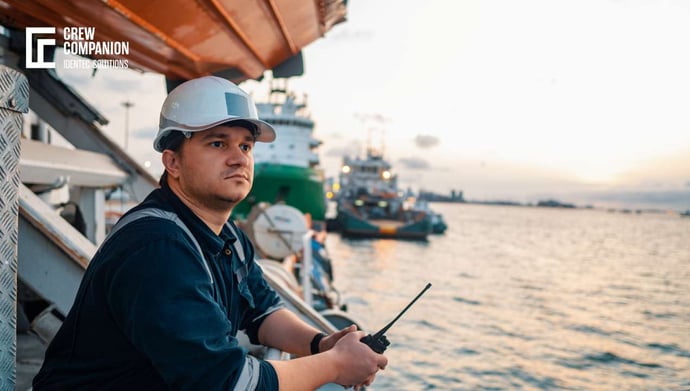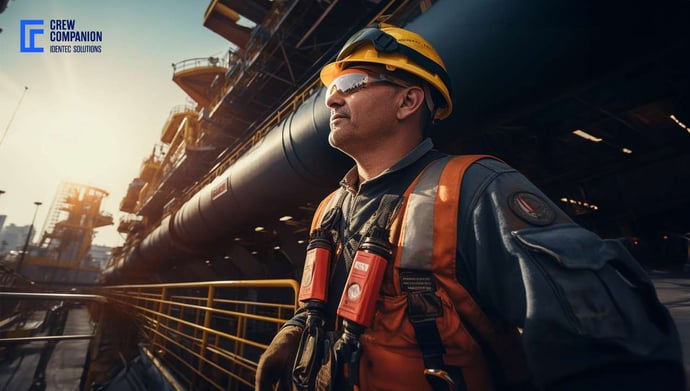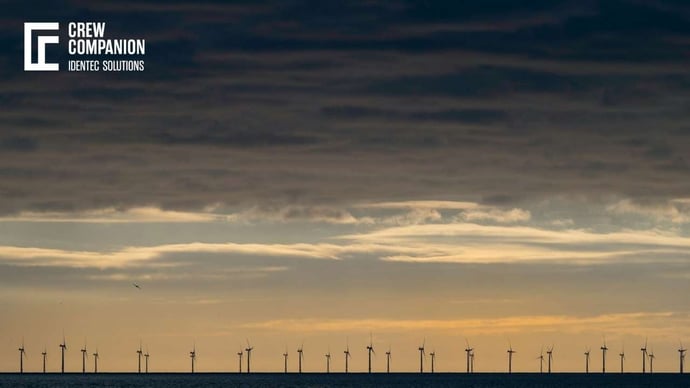HSE Standards in the North Sea - what are the laws in the UK, Norway and Denmark?
| Written by Michal Wozniakowski-Zehenter

No video selected
Select a video type in the sidebar.
HSE STANDARDS IN THE UNITED KINGDOM'S NORTH SEA OPERATIONS
Keeping oil and gas workers safe and healthy is the responsibility of the Health and Safety Executive in the UK. The Health and Safety at Work etc. Act 1974 provides the legal framework for the enforcement powers of the HSE. The Offshore Installations (Safety Case) Regulations are an integral part of the legislation that governs offshore installations. Safety cases cover all aspects of operational safety, from initial design to offshore emergency response strategies. The comprehensive safety case provides a comprehensive risk assessment. Before beginning any operational activities, the HSE must approve this crucial document.
A significant part of the offshore safety regime in the United Kingdom is the Safety Representatives and Safety Committees Regulations. The regulations require the establishment of safety committees and facilitate the election of safety representatives, which are designed to systematically involve the workforce in safety-related matters. The specific provisions aimed at mitigating the risk of fire and explosion on offshore installations, as well as ensuring robust emergency response capabilities, are outlined in the Offshore Installations (Prevention of Fire and Explosion, and Emergency Response) Regulations, also known as PFEER. Furthermore, the Offshore Installations and Pipeline Works (Management and Administration) Regulations regulate the management of health and safety across offshore installations. Work activities and general safety management on installations are among these measures. As part of this set of regulations, a competent authority is established for oversight both of corporate and individual installation safety cases; it places a strong emphasis on managing and controlling major hazards. Its aim is to ensure a high level of protection for the environment and personnel on offshore installations by strengthening regulatory oversight of safety practices.
In order to achieve safety, the United Kingdom's regulatory system adopts a goal-setting regime, instead of prescribing exact methods. As a result, operators can deploy the best available techniques to improve safety performance beyond simple compliance, and they are encouraged to continuously strive to improve their performance. Using this approach, operators must demonstrate a thorough understanding of and effective management of all risks associated with their operations. Safety is ingrained in the business culture and is not just a compliance checklist; it is a fundamental part of business operations. Public participation and transparency are prominent aspects of UK offshore regulations. Public confidence in offshore safety will be enhanced as a result of this openness. Several lessons from the Piper Alpha disaster in 1988, a watershed moment for offshore safety culture in the UK, have heavily influenced the current landscape of UK offshore regulations. There has been considerable speculation as to how HSE regulations in the UK will adjust post-Brexit. Despite keeping most of the EU-influenced legislation, there is still the possibility of future divergence. As a result, offshore safety regulations in the UK may change as the country charts its own course independent of EU directives.
DANISH APPROACH
Despite its comparatively smaller size in the North Sea, Denmark's segment stands on an equal footing with the UK and Norway when it comes to the implementation of HSE standards. The Danish model of HSE management in offshore operations is characterized by rigorous regulations that integrate both international best practices and European Union directives, ensuring a comprehensive and robust approach to offshore safety and environmental protection.
It is the Danish Energy Agency (DWA) and the Danish Working Environment Authority's responsibility to oversee the offshore regulatory framework in Denmark. In addition to fulfilling international obligations and standards, these authorities are responsible for ensuring that offshore operations adhere to stringent Danish national laws. It is mandatory for offshore operators in Denmark to compile and maintain a comprehensive safety and environmental management document, similar to the UK's safety case. A high bar for health and safety standards in offshore oil and gas operations is reinforced by the Executive Order on Health and Safety in Offshore Oil and Gas Operations in Denmark. Companies are required to comply with this order to protect their employees' health and safety in offshore environments.
In the realm of environmental protection, Denmark sets itself apart with stringent environmental assessment regulations. Operators in the Danish North Sea are required to undertake exhaustive environmental risk assessments and establish solid oil spill response strategies. Such rigorous environmental scrutiny underlines Denmark's strong commitment to safeguarding the marine ecosystem and promoting sustainable practices within the offshore industry. A key element of Danish HSE regulations is worker safety. The laws in Denmark address the safety and health conditions of offshore workers with meticulousness. Under the regulations, companies must provide comprehensive safety training, provide personal protective equipment, and follow occupational health best practices. The offshore installations of Denmark are also subject to high technical and operational standards, and Denmark aims to prevent accidents by enforcing strict regulations on the technologies and processes used in offshore operations. In the North Sea, robust and reliable equipment is crucial for preventing incidents in difficult conditions, so these standards are particularly important. A crucial part of maintaining safety and environmental integrity in the North Sea is international cooperation, according to Denmark. In addition to cross-border collaborations, the country conducts joint emergency response drills, shares best practices, and enters into mutual support agreements with neighbours.
With an eye towards sustainability, Denmark's HSE standards not only aim to protect human life and the marine environment but also to ensure that offshore operations can be conducted in a manner that is responsible and aligned with the country's commitment to environmental leadership and climate goals.

NORWAY’S EXEMPLARY STANDARDS
The strict HSE standards applied to Norway's operations in the North Sea have earned the company international recognition. Norwegian standards not only demonstrate its commitment to offshore worker safety and the preservation of the marine ecosystem; also demonstrate the country's innovative regulatory approach.
The Norwegian HSE regulatory structure is spearheaded by the Petroleum Safety Authority Norway (PSA). The PSA is tasked with ensuring comprehensive coverage of HSE concerns within the industry, and it is recognized for its thorough oversight. Its proactive approach includes the integration of the latest technological advances and the implementation of novel safety practices. The legal framework governing Norway's offshore activities is a robust amalgamation of laws and regulations focusing on minimizing risk and preventing accidents. The Framework Regulations serve as the foundational bedrock of the HSE approach in the petroleum sector, outlining the core principles and expectations for industry operators. A critical component of this framework is the Management Regulations, which articulate the requirements for systematic management of health, safety, and environmental concerns by operators. These regulations play a pivotal role in compelling companies to exercise persistent oversight of HSE risks and to furnish the requisite documentation that evidences their adherence to regulations.
Further, the Activities Regulations define specific procedures covering a wide range of operational processes, including drilling operations. The authors emphasize the need for the necessary competencies and readiness to perform offshore activities safely. Assurances of safety and environmental protection are provided through these standards, which ensure such facilities are constructed and operated safely.
HSE regulations are distinctive for their risk-based approach, which necessitates that operators meticulously identify specific risks and devise strategies to mitigate them to an acceptable level. This approach requires operators in the North Sea to demonstrate a considerable degree of expertise and commitment to operational excellence. In the realm of operational management, Norway is a pioneer in the adoption of Integrated Operations (IO), which utilize digital technology to not only enhance production but also to bolster safety measures. PSA is a proactive proponent of employing digital tools and the analysis of real-time data to make more informed decisions regarding HSE. Worker involvement is another cornerstone of Norway's regulatory framework. Norwegian regulations mandate significant employee participation in safety-related matters, ensuring that the workforce is engaged in safety committees and has a voice in both the development and execution of safety protocols.
Norwegian HSE practices are also distinguished by their unwavering commitment to continuous improvement. It is expected that operators in the North Sea will go beyond complying with existing safety standards; they should be relentless about striving for enhanced safety measures, showing a dynamic approach to safety management. It is Norway's innovative approach to HSE regulation that elevates the North Sea's delicate marine ecosystems to the highest international standards.
CLOSER LOOK
A detailed examination of the HSE standards in the North Sea, with a focus on the United Kingdom, Norway, and Denmark, reveals that despite a shared commitment to protecting human life and the environment, the methodologies and execution of HSE regulations distinctly vary. This comparative analysis endeavours to illuminate the similarities and divergences within the HSE frameworks employed by these three prominent North Sea oil and gas producers.
As part of its regulatory philosophy, the United Kingdom favours a less prescriptive, outcome-oriented methodology, which permits operators to deploy the best available techniques for managing safety (see RFID mustering). In Denmark, the regulatory approach is more closely aligned with European Union directives, resulting in a prescriptive framework that parallels broader EU legislation. Operators must present an understanding and management plan for all conceivable risks when preparing a safety case versus risk assessment, according to the UK. However, Norway places a stronger emphasis on the precautionary principle and ongoing risk management, which necessitates frequent and detailed documentation as well. The involvement of workers is another factor that distinguishes these nations. Safety committees and safety representatives are clearly mandated in the UK's regulations, ensuring that worker participation in safety management is formalized. Workers are included in safety deliberations and decisions as a key component of Norway's safety model, which emphasizes worker participation as a key element. Among the countries with the most advanced technologies and a high degree of digitalization, Norway stands out because it uses digital technology to improve safety and increase operational efficiency with Integrated Operations (What is e-mustering?).
Environmental stewardship is a domain where Denmark particularly shines, reflecting its EU membership through a strong commitment to environmental safeguards. Norway, while not an EU member, nevertheless places a substantial emphasis on environmental standards, enacting some of the most stringent controls globally. The UK, though dedicated to environmental conservation, adopts a more goal-oriented stance as opposed to the prescriptive environmental methodologies favoured by the EU. Post-Brexit, the UK faces the possibility of deviating from EU-influenced regulations, potentially heralding shifts in its HSE framework. Norway, although not an EU member state, frequently aligns with EU regulations via the European Economic Area agreements, maintaining a degree of regulatory congruence with EU standards. Denmark, as a member of the EU, adheres to a set of HSE regulations that are closely entwined with EU legislation, often resulting in a harmonized regulatory approach across EU nations.
Industry Cooperation and Future Challenges - North Sea HSE Regulations
Perhaps one of the most critical areas that reinforce the HSE frameworks in the North Sea is the collaboration between nations, industry stakeholders, and international bodies. Great Britain, Norway, and Denmark are aware of one fact: the offshore oil and gas industry is transnational; because of shared waters and resources, this industry requires a cohesive approach in the realms of safety and environmental concerns. Joint emergency response drills, cross-border agreements, and best-practice exchanges are by now common. These collaborations ensure that the highest standards of safety and environmental protection are consistently maintained, regardless of national borders. In addition, organizations such as the North Sea Offshore Authorities Forum promote the harmonization of regulatory standards, improving the coherence of safety regulations and enhancing overall effectiveness in this area.
Looking to the future, North Sea HSE frameworks will have to confront new challenges. With the development of renewable projects like offshore wind farms in the offshore energy industry, regulators will need to reconsider and adjust existing standards on safety. While the fundamental principles of protecting workers and the environment would remain relevant, new risks peculiar to the renewable infrastructure are introduced. Climate change presents added concerns; these include increased extreme weather conditions, which call for greater readiness and response mechanisms. Continued innovation, regulatory foresight, and international cooperation are the keys to continued operation in the North Sea-oil, gas, or renewables-safely and sustainably for generations.
FAQS
What is the HSE in the oil industry?
It deals with the conduct of activities in such a way as to avoid harm to the health of employees and others, and to promote, as appropriate, their health. Typically, the health function focuses on the effects of oil field chemicals and oil field physical environment on employees.
What are the hazards of offshore platforms?
One of the most common physical hazards on offshore platforms is noise. Various noise-producing machinery such as engines, pumps, compressors, generators, and other machinery can contribute to it. Prolonged exposure to noise can lead to hearing damage and even hearing loss.
TAKEAWAY
There are robust HSE frameworks in the UK, Norway, and Danish countries to mitigate the risks associated with North Sea operations. There are different approaches that countries take to managing these risks, from flexible goal-setting to detailed risk assessments to stringent environmental safeguards. Each of these three nations shares an ultimate objective of preventing accidents and preserving the marine environment, ensuring that the North Sea remains a vital, yet safe, source of energy for Europe.
Dive deeper into one of our core topics: Emergency Response Management
Sources:
(1) https://www.offshorenorge.no/globalassets/002---recommended-guidelines-for-safety-and-emergency-response-training---rev.-24.pdf
(2) https://www.hse.gov.uk/offshore/liaison.htm
Note: This article was updated on the 4th of October 2024

Author
Michal Wozniakowski-Zehenter, Marketing Manager
Michal Wozniakowski-Zehenter is an experienced marketing and project management professional. He spent most of his career on projects with a strong focus on digital marketing and event management. He is a very active voice representing offshore and mining industries through social media channels. Michal writes mainly about offshore oil and gas, renewable energy, mining and tunnelling. Compiling and sharing the knowledge within industries is one of his goals.




